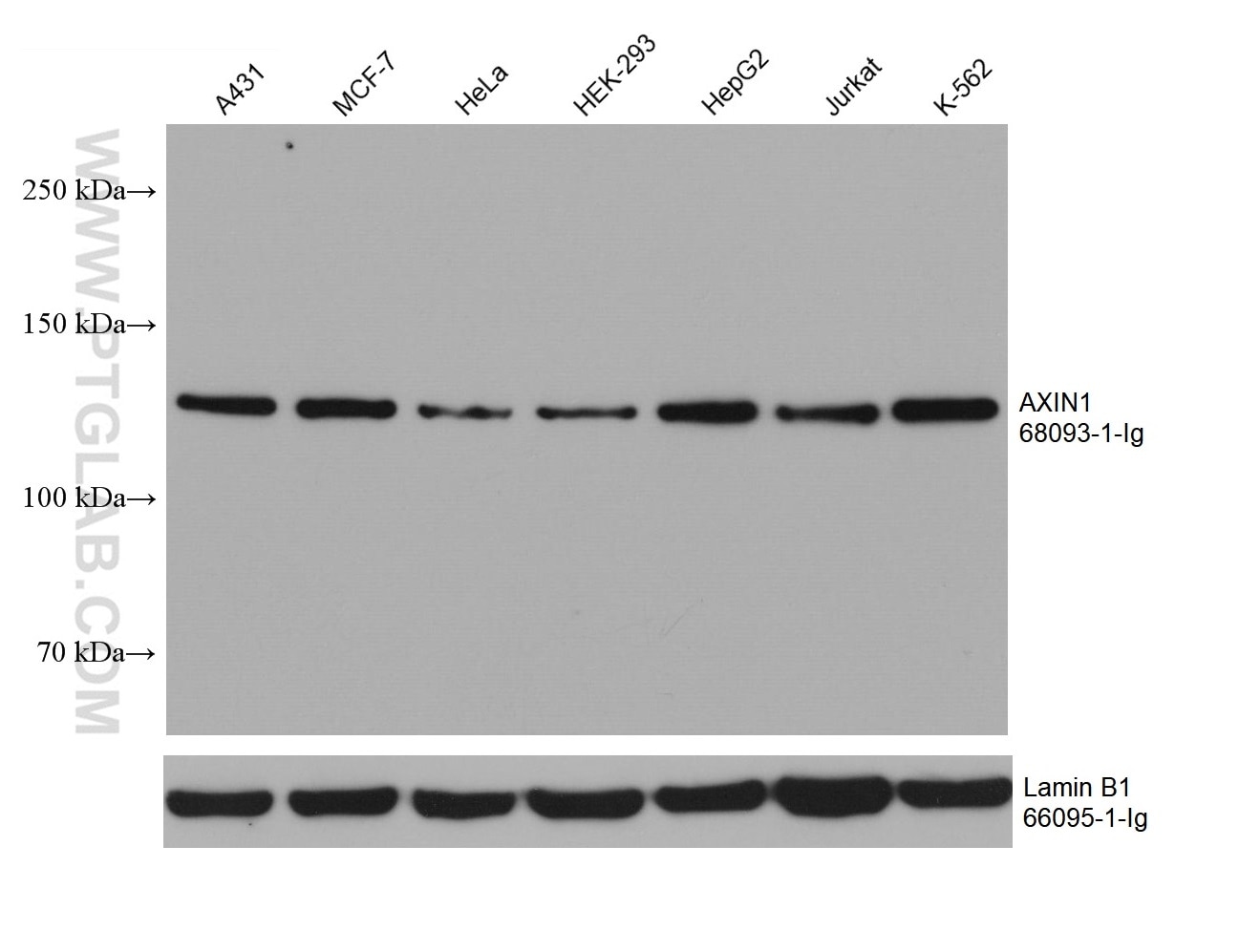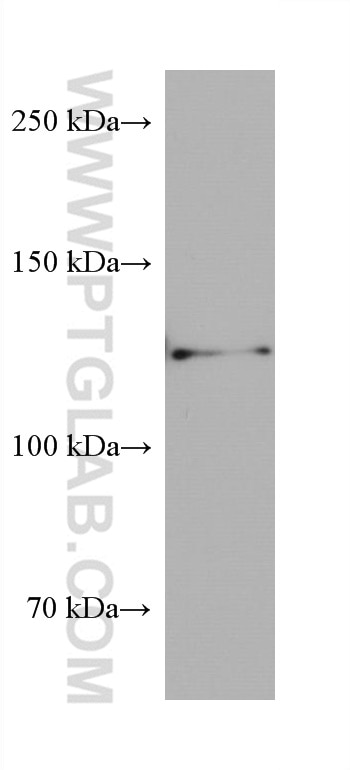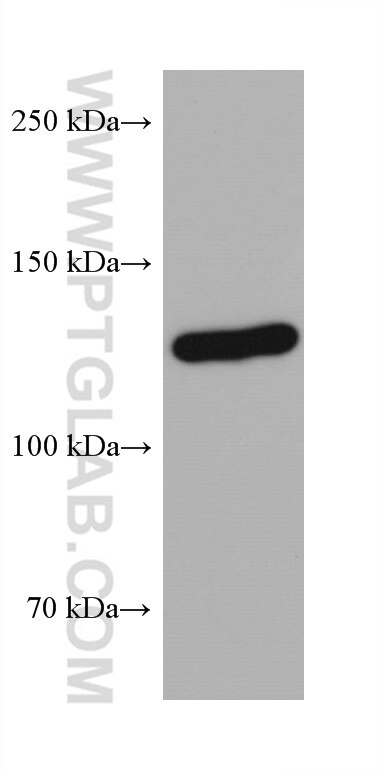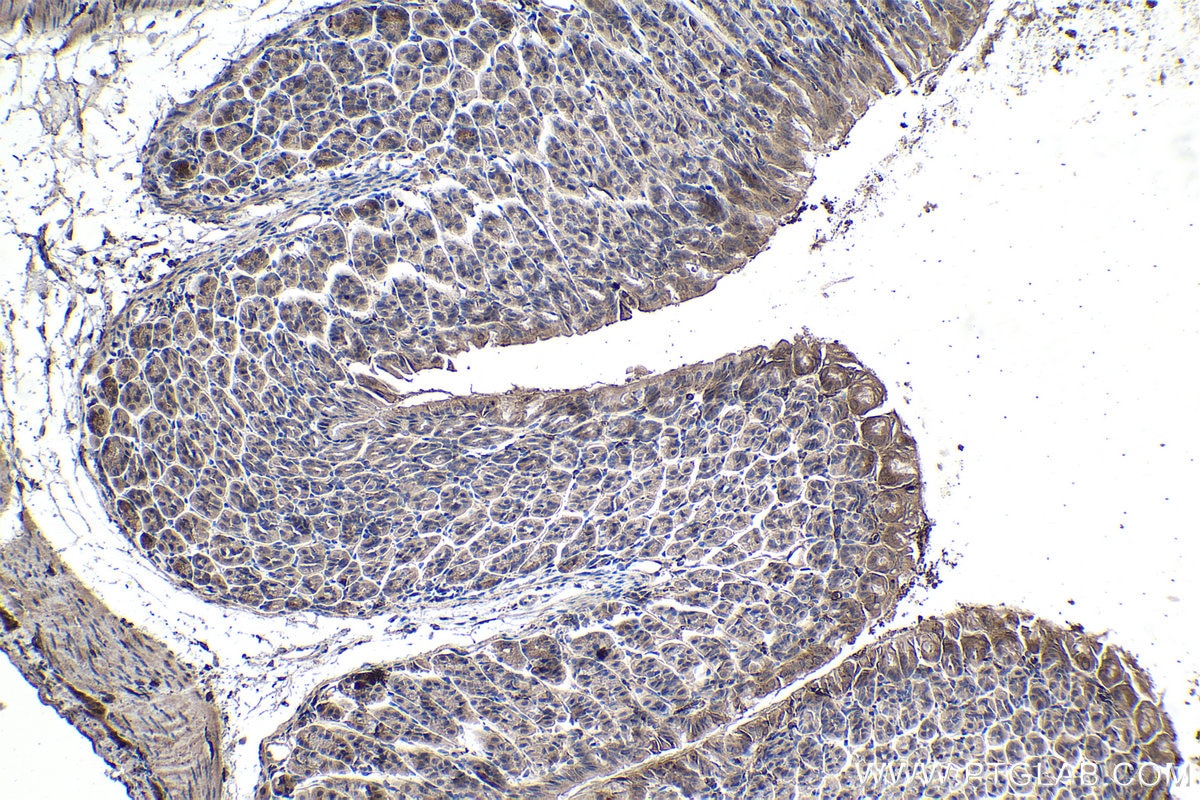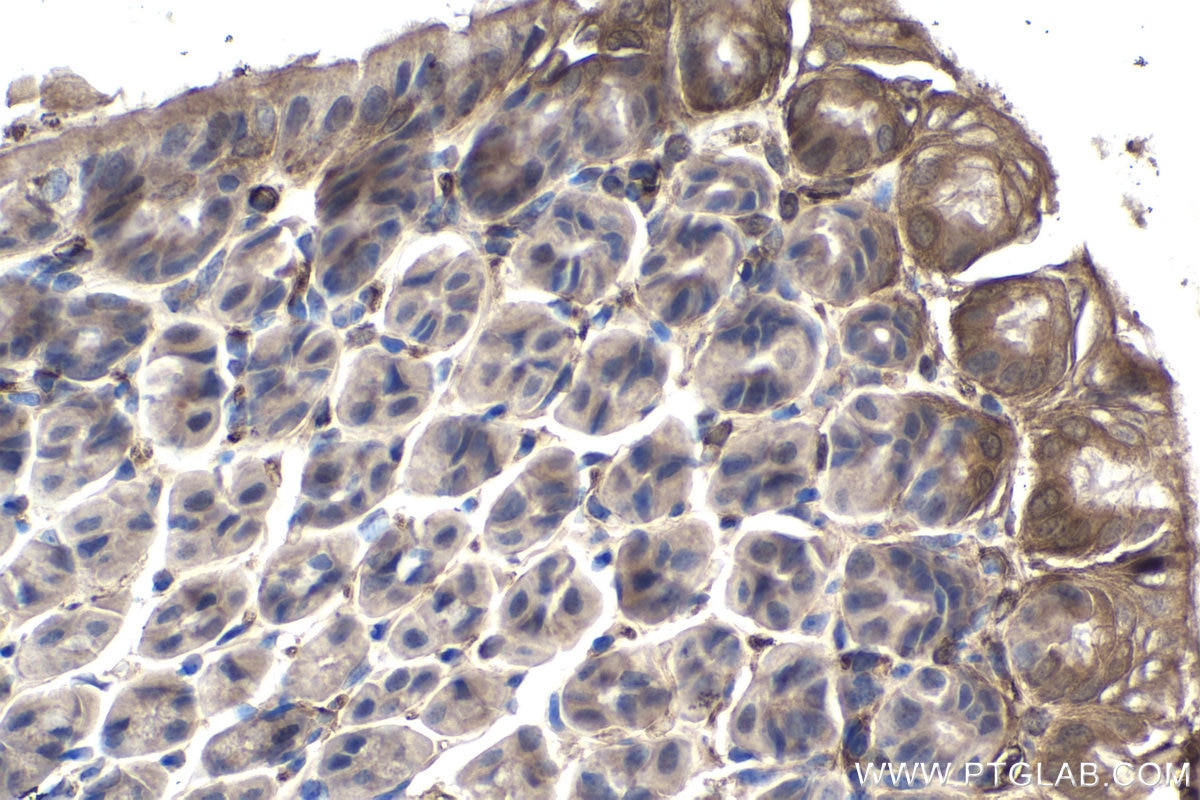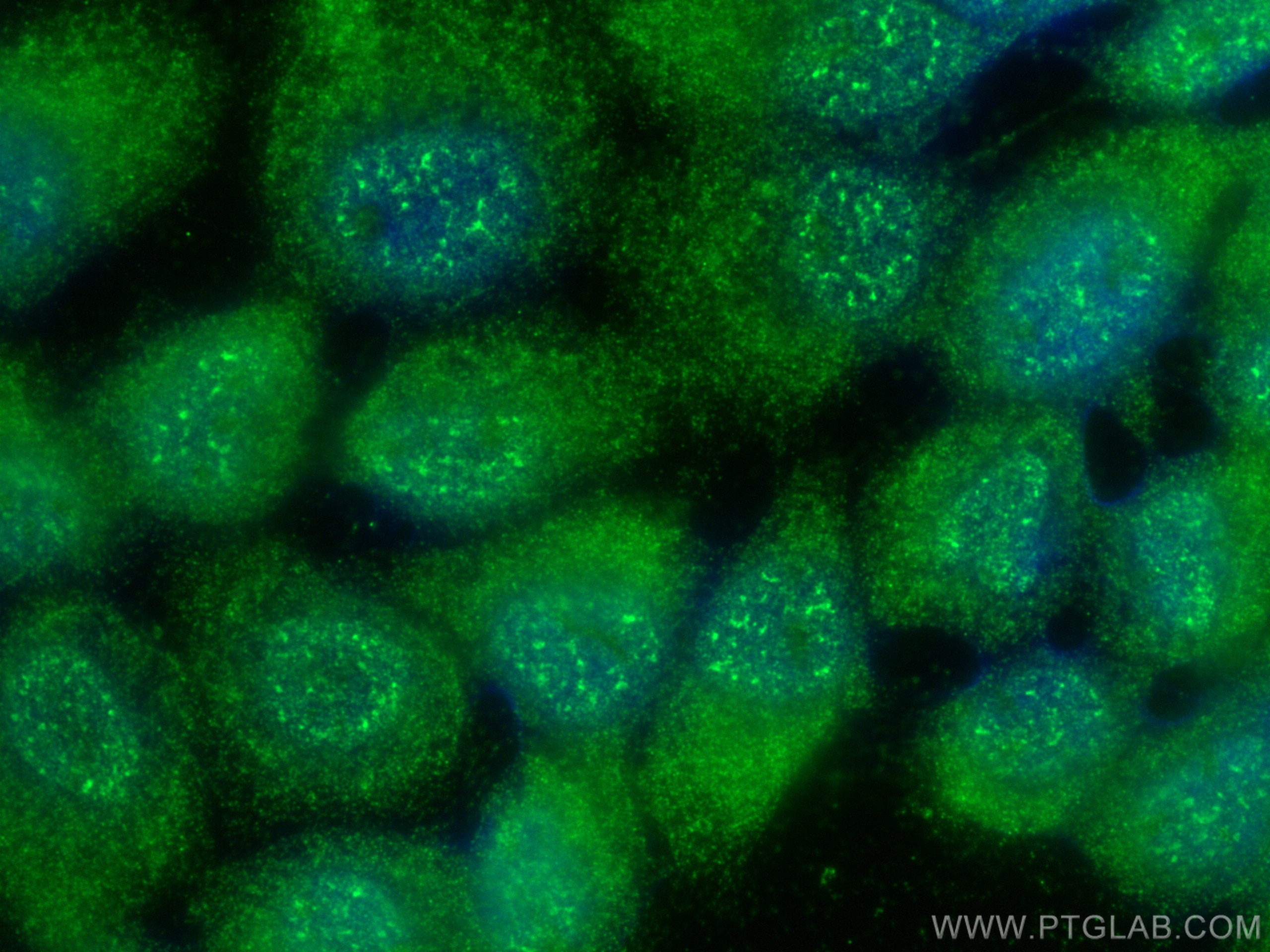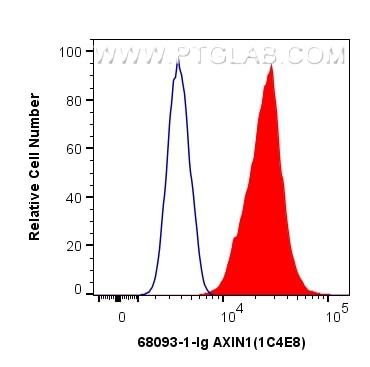Anticorps Monoclonal anti-AXIN1
AXIN1 Monoclonal Antibody for WB, IHC, IF/ICC, FC (Intra), ELISA
Hôte / Isotype
Mouse / IgG1
Réactivité testée
Humain, rat, souris
Applications
WB, IHC, IF/ICC, FC (Intra), ELISA
Conjugaison
Non conjugué
CloneNo.
1C4E8
N° de cat : 68093-1-Ig
Synonymes
Galerie de données de validation
Applications testées
| Résultats positifs en WB | cellules A431, cellules HEK-293, cellules HeLa, cellules HepG2, cellules HSC-T6, cellules Jurkat, cellules K-562, cellules MCF-7, cellules NIH/3T3 |
| Résultats positifs en IHC | tissu d'estomac de souris, il est suggéré de démasquer l'antigène avec un tampon de TE buffer pH 9.0; (*) À défaut, 'le démasquage de l'antigène peut être 'effectué avec un tampon citrate pH 6,0. |
| Résultats positifs en IF/ICC | cellules A431, |
| Résultats positifs en FC (Intra) | cellules A431, |
Dilution recommandée
| Application | Dilution |
|---|---|
| Western Blot (WB) | WB : 1:5000-1:50000 |
| Immunohistochimie (IHC) | IHC : 1:1000-1:4000 |
| Immunofluorescence (IF)/ICC | IF/ICC : 1:200-1:800 |
| Flow Cytometry (FC) (INTRA) | FC (INTRA) : 0.40 ug per 10^6 cells in a 100 µl suspension |
| It is recommended that this reagent should be titrated in each testing system to obtain optimal results. | |
| Sample-dependent, check data in validation data gallery | |
Applications publiées
| WB | See 3 publications below |
| IF | See 1 publications below |
Informations sur le produit
68093-1-Ig cible AXIN1 dans les applications de WB, IHC, IF/ICC, FC (Intra), ELISA et montre une réactivité avec des échantillons Humain, rat, souris
| Réactivité | Humain, rat, souris |
| Réactivité citée | Humain |
| Hôte / Isotype | Mouse / IgG1 |
| Clonalité | Monoclonal |
| Type | Anticorps |
| Immunogène | AXIN1 Protéine recombinante Ag10079 |
| Nom complet | axin 1 |
| Masse moléculaire calculée | 826aa,92 kDa; 862aa,95 kDa |
| Poids moléculaire observé | 110-120 kDa |
| Numéro d’acquisition GenBank | BC044648 |
| Symbole du gène | AXIN1 |
| Identification du gène (NCBI) | 8312 |
| Conjugaison | Non conjugué |
| Forme | Liquide |
| Méthode de purification | Purification par protéine G |
| Tampon de stockage | PBS with 0.02% sodium azide and 50% glycerol |
| Conditions de stockage | Stocker à -20°C. Stable pendant un an après l'expédition. L'aliquotage n'est pas nécessaire pour le stockage à -20oC Les 20ul contiennent 0,1% de BSA. |
Informations générales
Axis inhibition protein1 (AXIN1), also called AXIN, together with AXIN2 are multidomain scaffold proteins that negatively regulate Wnt signaling. AXIN1 is likely to function as a tumor suppressor. Under UV irradiation, AXIN1-HIPK2-TP53 complex forms. The complex also controls cell growth, apoptosis and development. Like AXIN2, AXIN1 undergoes poly(ADP-ribosy)lation by tankyrase TNKS and TNKS2 followed by unbiquitination by RNF146 which leads to its degradation and subsequent activation of Wnt signaling. Its deubiquitination by USP34 is important for nuclear accumulation during Wnt signaling. Recent researches find that CircAXIN1 encodes a novel protein, AXIN1-295aa, which shows at around 40-55 kDa by Western Blot. AXIN1-295aa functions as an oncogenic protein, activating the Wnt signaling pathway to promote GC tumorigenesis and progression, suggesting a potential therapeutic target for GC.
Protocole
| Product Specific Protocols | |
|---|---|
| WB protocol for AXIN1 antibody 68093-1-Ig | Download protocol |
| IHC protocol for AXIN1 antibody 68093-1-Ig | Download protocol |
| IF protocol for AXIN1 antibody 68093-1-Ig | Download protocol |
| FC protocol for AXIN1 antibody 68093-1-Ig | Download protocol |
| Standard Protocols | |
|---|---|
| Click here to view our Standard Protocols |
Publications
| Species | Application | Title |
|---|---|---|
Int Immunopharmacol Preliminary investigation on the mechanism of baicalein regulating the effects of Nischarin on invasion and apoptosis of human breast cancer cells MCF-7 through Wnt3α/β-catenin pathway | ||
Biochem Pharmacol SMURF1 leads to the β-catenin signaling-mediated progression of esophageal squamous carcinoma by losing PATZ1-induced CCNG2 transcription | ||
Int J Biol Macromol Xylooligosaccharides alleviate the carbohydrate-enriched diet-induced intestinal barrier dysfunction in carp Megalobrama amblycephala by promoting intestinal development, immunity and gut microbiota |
